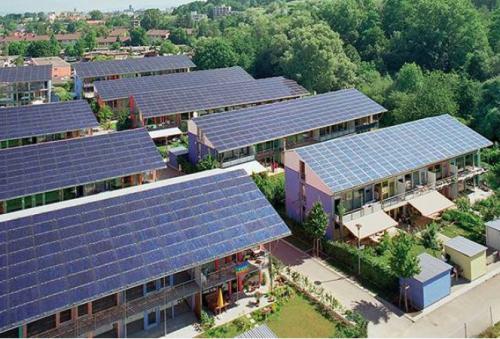German energy policy lessons for Latin America
- Opinión

Standards related to environmental protection address much of the public, civil and criminal law domain. At present, the issue of sustainability has been integrated (Brundtland, 1987), to refer to all the options to diminish the consequences of our consumption and production pattern on the environment, taking care of social and economic interests. In order to achieve the objectives of Environmental Policy agreed in Agenda 2030, we act based on the key principles of prevention, precaution, correction at source, the polluter pays, integration and subsidiarity.
The Kyoto Protocol, signed in 1997, represented the world's first binding international treaty to contain climate change and reduce greenhouse gas (GHG) emissions. Governments agreed to a reduction of GHG emissions of at least 5% on average of GHG emissions from 1990 levels to be achieved between 2008 and 2012. The Kyoto Protocol came into force until 2005 and its targets were not met.
Subsequently, the Paris Climate Agreement was signed in 2015 with two core commitments. It was decided, on the one hand, to keep global warming below 2°C and GHG emission reduction measures were not restricted to industrialized countries. On the other hand, the Sustainable Development Goals (SDA), adopted by the UN General Assembly in autumn 2015, were recognized as universal. From then on, the ODS became the central reference framework for the so-called Agenda 2030, which should guide international environmental and development policy.
Since the 1990s, Germany's environmental policy has been exemplary in the pursuit of GHG emission reduction targets. Since 1994, the German Constitution has established environmental protection as a state objective for the benefit of future generations. The German Environmental Information Act provides freedom of access to environmental information free of charge, with the aim of providing citizens with a higher level of environmental knowledge and awareness. In addition, legislation was adopted on environmental impact assessment (EIA) in relation to European requirements.
With the Paris Agreement in 2015, Germany also committed itself to achieving certain climate targets, for which mechanisms such as the reduction of fertilizers in agriculture, new standards for the building sector and the expansion of renewable energies were proposed. By 2030 Germany wants to reduce its greenhouse gas emissions by 55 per cent compared to 1990 (Kyoto) and by 2050 from 80 to 95 per cent (Paris). This means that the annual reduction should be 1.37% over the 40-year period. According to the following graph, the annual reduction of Greenhouse Gas (GHG) emissions was 1.14% on average. This shows us that Germany can meet its long-term goal if the trend continues.
Germany combines its economic dynamics with environmental protection as a strategy for a sustainable economy. German environmental technology is in demand worldwide. Its government, together with the automobile manufacturers, is pursuing the ambitious goal of transforming Germany into the leading market for electromobility globally and thus winning over China. By 2018, 177,070 electric and hybrid cars will be on the move within Germany. In 2019, 86,475 electric cars were exported mainly to the US, China and the UK. During 2020, 40 billion Euros were planned to be invested in research and development, with the project to bring more than 100 models of electric cars to market by 2030. The government supports their sale in the country with bonuses, exemptions and subsidies. At the same time, investments in energy research have increased, particularly in battery technology for electric cars.
However, the changes have not been automatic. In 2019, for example, Germany imported coal (mainly from Russia and the USA), crude oil (mainly from Russia and the Netherlands), refined oil (mainly from the Netherlands and Belgium) and natural gas (from Russia via pipelines) for over 100 billion euros in 2019. Despite Germany being considered an example of a government on the road to ecologically sustainable development, it still has a high level of fossil energy consumption.
The issue of climate change is a global problem. In developing countries, as is the case in Latin America, many of the decisions regarding natural resources have been influenced by groups with economic interests without social or environmental responsibility. Germany offers the opportunity to learn from their shared experiences and interests in the fields of energy and climate. But in addition, there is a need to achieve real governance over natural resources based on effective interaction between government agencies, universities, civil society and the private sector. If measures are also implemented in accordance with the geological, hydrological and climatic characteristics of each region, the political-environmental update and energy transition in Latin America could continue its path with successful steps.
Num.20, Year 2020
August 17th
- Oscar Ugarteche, Senior Researcher"C", IIEc-UNAM, Conacyt SNI III, Coordinator of obela.org
- Priscila Martínez Galeazzi, Faculty of Science, UNAM, member of obela.org
Del mismo autor
- El multilateralismo bipolar 08/03/2022
- Bipolar multilateralism 07/03/2022
- What does 2022 bring? Uncertainty 31/01/2022
- ¿Qué trae el 2022? Incertidumbre 31/01/2022
- The most expensive Christmas of the century... (so far) 20/01/2022
- La navidad más cara del siglo (hasta ahora) 20/01/2022
- Lo que pasó en el 2021 10/01/2022
- What happened in 2021 10/01/2022
- Estados Unidos: el elefante en la habitación 08/11/2021
- The elephant in the room 07/11/2021








